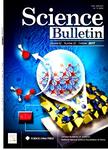版权所有:内蒙古大学图书馆 技术提供:维普资讯• 智图
内蒙古自治区呼和浩特市赛罕区大学西街235号 邮编: 010021

出 版 物:《Science Bulletin》 (科学通报(英文版))
年 卷 期:2011年第Z1期
页 面:380-385页
学科分类:1002[医学-临床医学] 100201[医学-内科学(含:心血管病、血液病、呼吸系病、消化系病、内分泌与代谢病、肾病、风湿病、传染病)] 10[医学]
基 金:supported by the National Natural Science Foundation of China (10672081) the Foundation of Chinese State Key Laboratory of Loess and Quaternary Geology
主 题:upper respiratory tract asymmetric tracheobronchial airways transportation and deposition lobar differences computational fluid dynamics simulation
摘 要:A representative human upper respiratory tract model consisting of oropharyngeal and asymmetric tracheobronchial(TB) airways from the trachea(G0) to the main lobar bronchi(G2) was constructed. Laminar-to-turbulent airflow for typical inhalation modes as well as micro-particle transportation,wall deposition and mass flow to lobes was simulated using the CFX10.0 software from Ansys Inc. The numerical particle deposition efficiency of the oropharynx region and two generations(G1 and G2) of TB airways shows great agreement with the experimental data obtained from realistic casts. The particle deposition pattern indicates that inertial impaction is the primary mechanism in the human upper airway,and turbulence dispersion performs crescent influence especially for small particles. The initial positions of particles with different fates are confined to specifically concentrated zones. The particle mass distributions of five lobes are close to airflow distributions. The upper lobes receive fewer particles than lower lobes and the right middle lobe receives the least.